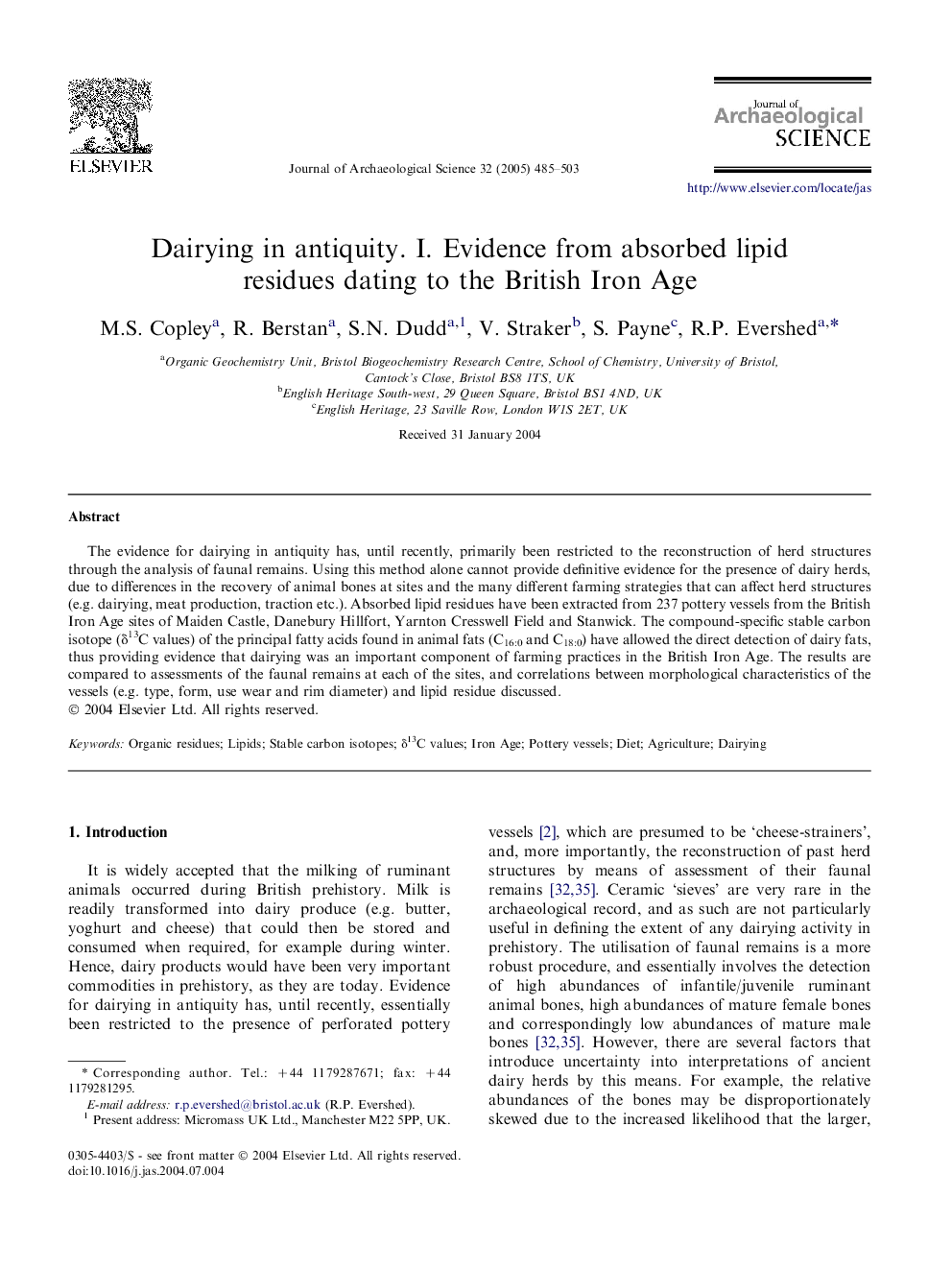| Article ID | Journal | Published Year | Pages | File Type |
|---|---|---|---|---|
| 10499552 | Journal of Archaeological Science | 2005 | 19 Pages |
Abstract
The evidence for dairying in antiquity has, until recently, primarily been restricted to the reconstruction of herd structures through the analysis of faunal remains. Using this method alone cannot provide definitive evidence for the presence of dairy herds, due to differences in the recovery of animal bones at sites and the many different farming strategies that can affect herd structures (e.g. dairying, meat production, traction etc.). Absorbed lipid residues have been extracted from 237 pottery vessels from the British Iron Age sites of Maiden Castle, Danebury Hillfort, Yarnton Cresswell Field and Stanwick. The compound-specific stable carbon isotope (δ13C values) of the principal fatty acids found in animal fats (C16:0 and C18:0) have allowed the direct detection of dairy fats, thus providing evidence that dairying was an important component of farming practices in the British Iron Age. The results are compared to assessments of the faunal remains at each of the sites, and correlations between morphological characteristics of the vessels (e.g. type, form, use wear and rim diameter) and lipid residue discussed.
Related Topics
Physical Sciences and Engineering
Materials Science
Materials Science (General)
Authors
M.S. Copley, R. Berstan, S.N. Dudd, V. Straker, S. Payne, R.P. Evershed,
